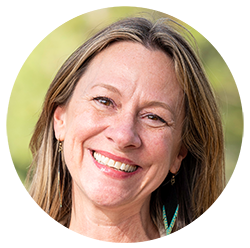By and for the Community – Democratic Philanthropy
Every fall, we host our competitive grant cycle, which is open to any regionally focused nonprofit to apply for grant funds. As always, there are more requests than funds to distribute; and as always, the process is infused with the democratic principles that were set in motion when the Tahoe Truckee Community Foundation was created.
Our founding gift from William Hewlett, was structured as a match which was successfully raised by our community. These first gifts created our endowment and is the basis for our community grantmaking. One of the unique strengths of a community foundation is that our resources are not driven by any one special interest. Our resources are the collective result of many donors who care about this place. This is how we approach our grantmaking as well. Each year, a volunteer committee that represents different facets of our community, comes together to help recommend the grant distributions to our Board of Directors. Together, we strive to align resources with opportunities that have been shaped by trusted partners and community engagement. This ensures that there is a readiness for resources to flow to community level solutions. Philanthropy without community readiness can be a waste of time and resources — and undemocratic.
This democratic approach to community solutions can also be seen when exploring new ideas and innovations that help fill gaps in the system. The recent launch of a COAD, which stands for Community Organizations Active in Disaster, is a perfect example. COADs are designed to focus on community preparedness for natural disasters and other emergencies. TTCF learned about this work from other community foundations across the state and secured funding to explore the interest and relevance with other stakeholders. Over the course of a year, our team brought multiple stakeholders together to provide input including the nonprofit sector and local governments. Together, the collective knowledge and expertise of the different agencies verified the need for a COAD, explored the best operating model to support and sustain the effort and then TTCF helped raise the funds to support the launch. Funds deployed to this effort are now ensured to have a multi-stakeholder understanding and engagement for success.
In this Quarterly Impact Report you will learn more about the recently launched COAD, and so much more. We are so grateful for the network of partners and donors who help ensure that there are community level solutions and resources available to respond to the important needs that our community faces today, and in the future.

Stacy Caldwell
